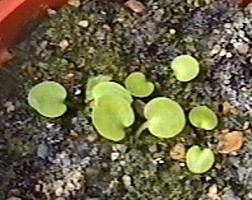
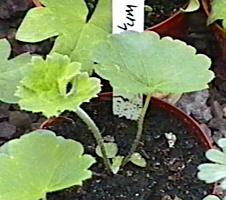
| Return to Asiatic Species List | Return to Species cover page | Return to Home Page |
Plant Development from Seed to Flowering
According to Fritz Khölein in his book "Schöne Rittersporne", D. vestitum originates from the western Himalayan region, where it is found at altitudesof 2800 -3800 m.
Seed from The Hardy Plant Society was sown in a pot of multipurpose compost in late January and left outdoors exposed to the weather. Germination occurred during April. The seedlings have large, rounded cotyledons. The first true leaves are also round, with only shallow indentation of the margin and not the deep division into segments like the leaves of most cultivated delphiniums.
 |
 |
Development proceeded by growth of a number of leaves forming a basal rosette. Successive leaves grew larger and larger and their stalks longer, while the older leaves shrivelled and decayed. One seedling was planted out in a border where the soil had been enriched by incorporating horse manure in the spring, while the others were grown in multi-purprose compost in 1litre pots. The leaves of the plant in the garden grew very large (30cm diameter). The leaves of all plants had exceptionally long (25 - 30 cm) stalks (petioles), which are covered with long white hairs. The leaves are also covered with hairs, with hairs on the lower surface being longer than those on the upper surface.
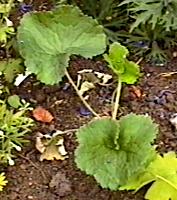 |
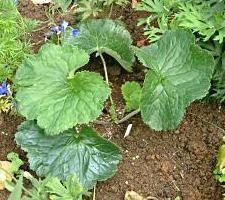 |
There were no signs of flowering until late September when a pot-grown seedling began to develop a stem terminated by a cluster of buds. The plant in the garden also soon showed signs of flowering. The cluster of flowers already seems to be well formed as the stem emerges from the base. A notable change in the growth pattern is that leaves on the flower stem have just a short (10 - 30mm) stalk. These leaves also have a more pronounced division into three broad lobes, with a separating slit extending about one third of the leaf diameter towards the stem.
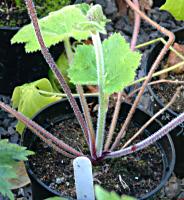 |
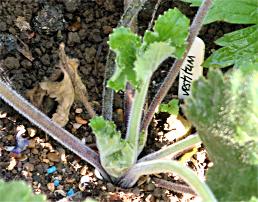 |
The stems developed rapidly and the first flowers were open by 12th October for the pot plant and by the end of the month for the open-ground plant, which by then had also developed a number of secondary flower stems from near the base of the plant.
|
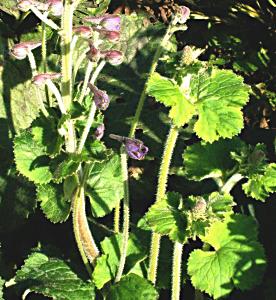 |
The dark purplish-violet florets remain cupped and have a broad-based spur. The blade of the intensely black petals has a pronounced central division.
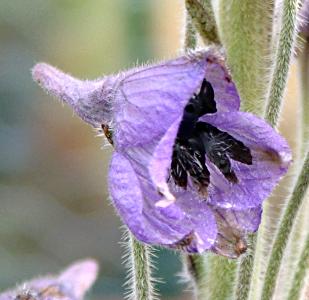 |
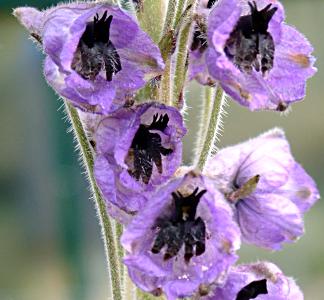 |
Due to the very late flowering, there was no pollination and hence no seed. The normal flowering period for D.vestitum is August/September, when the flowers can be enjoyed alongside gentians and other gems in a rock garden. The plants then set copious quantities of seed.
| Return to Asiatic Species List | Return to Species cover page | Return to Home Page |